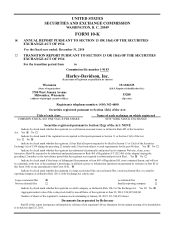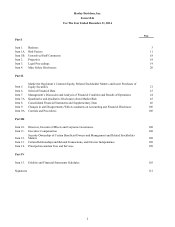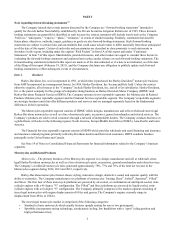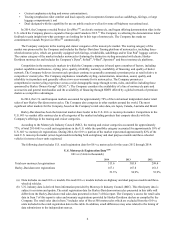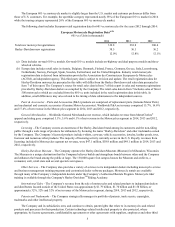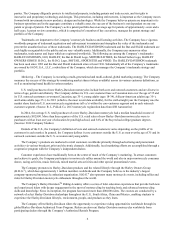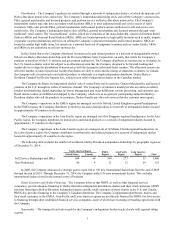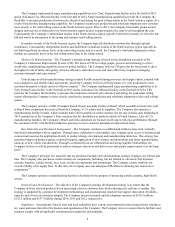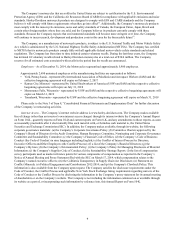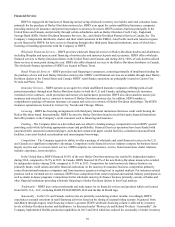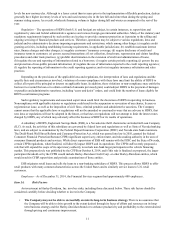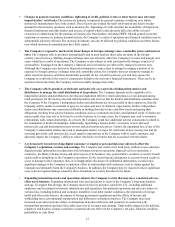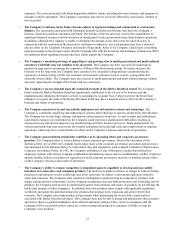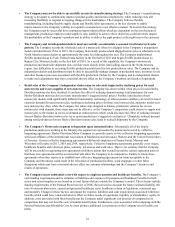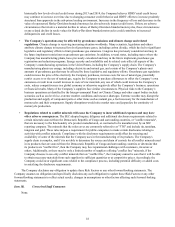Harley Davidson 2014 Annual Report Download - page 8
Download and view the complete annual report
Please find page 8 of the 2014 Harley Davidson annual report below. You can navigate through the pages in the report by either clicking on the pages listed below, or by using the keyword search tool below to find specific information within the annual report.
The Company implemented surge manufacturing capabilities at its York, Pennsylvania facility in the first half of 2013
and at its Kansas City, Missouri facility in the first half of 2014. Surge manufacturing capabilities provide the Company the
flexibility to increase production of motorcycles ahead of and during the peak selling season in the North America region. As a
result of this flexible manufacturing capability, the Company's motorcycle production and wholesale shipments now correlate
more closely to the retail selling season in the North America region. Prior to 2013, the Company historically produced and
shipped motorcycles at wholesale to its North America region dealers at approximately the same level throughout the year.
Consequently, the Company’s independent dealers in the North America region typically built their inventory levels in the late
fall and winter in anticipation of the spring and summer retail selling season.
In markets outside of the North America region, the Company typically distributes motorcycles through regional
warehouses. Consequently, independent dealers and distributors in markets outside of the North America region typically do
not build significant inventory levels in the non-riding season, and as a result, the Company’s wholesale shipments to these
markets are generally lower in the non-riding season than in the riding season.
Motorcycle Manufacturing – The Company’s manufacturing strategy is based on the disciplined execution of the
Company's Continuous Improvement System (CIS). The focus of CIS is to align people, process and technology to drive
world-class manufacturing capability across its global facilities. The Company believes CIS provides the framework to drive
the highest levels of safety and quality, increase efficiency and reduce costs, and more effectively respond to changing
customer demands and expectations.(1)
Critical aspects of this manufacturing strategy include flexible manufacturing processes and supply chains, coupled with
cost-competitive and flexible labor agreements, which the Company believes will help ensure it is well positioned to meet
customer demand in a timely and cost-effective manner.(1) The Company implemented surge manufacturing capabilities at its
York, Pennsylvania facility in the first half of 2013 and at its Kansas City, Missouri facility in the first half of 2014. This
provides the Company the flexibility to increase the production of motorcycles ahead of and during the peak retail selling
season allowing the Company to more closely correlate the timing of production and wholesale shipments to the retail selling
season.
The Company operates a CKD (Complete Knock Down) assembly facility in Brazil, which assembles motorcycles sold
in Brazil from component kits sourced from the Company’s U.S. plants and its suppliers.€The Company also operates a
manufacturing facility in India, which includes both CKD assembly of certain motorcycles for sale in India, and, beginning in
2014, production of the Company’s Street motorcycles for distribution to markets outside of North America.€Like its U.S.
manufacturing facilities, the Company’s Brazil and India operations are focused on driving world-class performance through
the execution of CIS, with flexible production processes to meet customer demands at reduced lead times.
Raw Materials and Purchased Components – The Company continues to establish and reinforce long-term, mutually
beneficial relationships with its suppliers. Through these collaborative relationships, the Company gains access to technical and
commercial resources for application directly to product design, development and manufacturing initiatives. This strategy has
generated improved product quality, technical integrity, application of new features and innovations and faster manufacturing
ramp-up of new vehicle introductions. Through a continued focus on collaboration and strong supplier relationships, the
Company believes it will be positioned to achieve strategic objectives and deliver cost and quality improvement over the long-
term(1).
The Company's principal raw materials that are purchased include steel and aluminum castings, forgings, steel sheets and
bars. The Company also purchases certain motorcycle components, including, but not limited to, electronic fuel injection
systems, batteries, certain wheels, tires, seats, electrical components and instruments. The Company closely monitors the
overall viability of its supply base. At this time, the Company does not anticipate difficulties in obtaining raw materials or
components(1).
The Company operates a manufacturing facility in Australia for the purpose of producing certain complex, high-finish
wheels.
Research and Development – The objective of the Company's product development strategy is to ensure that the
Company delivers relevant products for an increasingly diverse customer base while reducing cost and time to market. The
strategy is supported by a product development methodology and organizational structure that support innovation, flexibility,
capacity and a focus on consumer insights. The Company incurred research and development expenses of $138.3 million,
$152.2 million and $137.3 million during 2014, 2013 and 2012, respectively.
Regulation – International, federal, state and local authorities have various environmental control requirements relating to
air, water and noise that affect the business and operations of the Company. The Company strives to ensure that its facilities and
products comply with all applicable environmental regulations and standards.
8

